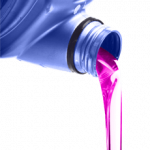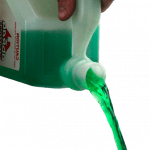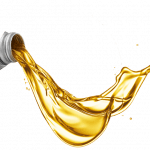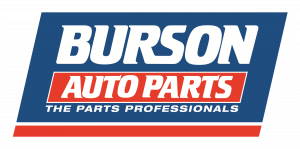RESOURCES
Vehicle Maintenance
Using the latest state-of-the-art technology, we quickly find any problems and properly fix them first time. We don’t like ‘come-backs’. We do love it when your vehicle is running at 100%.
Here are some Useful tips
Fuel Filters
Fuel Lines, Hoses & Connections

A fuel filter which hasn’t been replaced can limit the acceleration and overall performance of a vehicle. It can affect the emission system and cause many problems such as delays in starting the engine.
If over time too much sediment has built up in the fuel tank, the fuel filter will require replacing on a more than regular interval.
Fuel filters are designed to trap any harmful contaminants or particles which can affect your vehicles performance. The design of the filter also ensures maximum fuel flow and the quality of the filter paper will ensure maximum flow of clean fuel to the engine.
You will notice that after fitting a new fuel filter the engine will start and perform much better.
At AusTyre ‘N’ Automotive, when servicing your vehicle, we will also check that the fuel lines, hoses and connections are not damaged or leaking.
Brake Fulid Flush
Why is brake fluid important?

Brake fluid plays a crucial role as it transfers the force created when a driver presses the brake pedal directly onto the wheel hub. Heat is generated when you brake, especially under heavier braking or prolonged braking. This affects the brake fluid which can only work if it is liquid and not so hot that it has become vapour. Therefore the boiling point your brake fluid achieves is critical to efficient braking as temperatures above the boiling point form vapour bubbles in the system, potentially resulting in brake failure.
In addition, the brake fluid serves as a lubricant to all of the moving parts and prevents corrosion. It has to be compatible with rubber seals and hoses thus allowing braking systems to achieve long service and optimal performance.
Your science lesson for today is as follows. Brake fluid has hygroscopic properties. In other words, it means that it absorbs moisture during its life span via the brake lines – pipes and hoses – and joints that it lubricates. As the water content in the brake fluid increases, the temperature the liquid boils at decreases from when the brake fluid is ‘dry’ (IE no water content when new) to when it is ‘wet’ (contaminated with water).
The boiling point can be significantly reduced by water contamination below 5%. The difference in boiling temperatures for DOT 4 ESP Brake Fluid and how it exceeds the international standards for performance (known as the DOT standard). E.g. For standard DOT4 brake fluid, dry temperature is 230 Degrees and Wet 155 Degrees.
While regular servicing checks the boiling point of your brake fluid, vehicle manufacturers recommend that you change your brake fluid at least every 2 years. At AusTyre ‘N’ Automotive we check the quality and quantity of the vehicles brake fluid at every service interval.
Changing brake fluid when recommended prevents brake failure and maintains the boiling point at a safe level. Safety is our priority, make it yours as well.
Radiator Coolant Flush

A radiator coolant flush provides a number of benefits to your vehicles cooling system. It is a fairly inexpensive procedure that should be performed at least every 2 years.
Flushing your system replaces the anti-freeze throughout the cooling system and in turn pushes or flushes out all of the old anti-freeze and any contaminants that have build up in the cooling system. A flush ensures that all of the old anti-freeze is removed from the system.
The benefits of having your radiator flushed are:
- Removes Rusty Scale Deposits – Over time rust and scale deposits build up within the radiator and a flush helps to remove these deposits which get pushed out with the old anti-freeze. This is important since these build ups can cause overheating or even damage your radiator.
- The Water Pump – The additives in the coolant lubricate the water pump and this of course will lengthen the life of the water pump.
- Contaminants – A flush completely drains the system of the old anti-freeze which means that any contaminants that have made their way into the system will be flushed out. Over time, coolant loses important additives and anti-corrosive properties which leads to the buildup of part of contaminants. A radiator flush will remove these contaminants from the cooling system.
- The Cooling System – We perform a pressure test on cooling systems at each service interval. If a leak is present, it will show up. We also check the efficiency of your coolant and the condition of hoses and clamps.
- Rust Protection– The new anti-freeze will have additives that help prevent rust and build up. It will also prevent foaming in the system which helps it operate efficiently.
Flushing out your radiator gives it longevity and saves you money.
At every service interval we do check the quality and quantity of your vehicles coolant in addition to pressure testing the cooling system.
Coolants and Anti Freeze

Premium range of antifreeze coolants and treatments for engine and cooling system protection.
Engine Oil Flush
Are oil flushes necessary?

Is an Engine Flush necessary? An Engine Flush can help loosen deposits and dissolve sludge, returning your engine to like-new condition. However, in older engines with high miles, sludge may be the only barrier keeping oil from seeping through worn or cracked seals, so let’s leave well enough alone.
Oil sludge can block oil galleries and cause damage to engine components. Over time the sludge hardens and cakes on to components. Clean oil alone can’t clean out these deposits; however the chemicals used in an engine flush can, allowing clean oil to do its job.
Use Valvoline Engine Flush. The simplest solution here is to use a chemical engine sludge remover. Valvoline Engine Flush is added to the old oil, then you idle the engine for 5-10 minutes without driving it. The engine is then drained and the oil filter and oil are replaced. In some cases, a second Engine Flush may be required, which of course then means another oil filter and fresh oil are used. Valvoline Engine Flush is an advanced, non-solvent formulation designed to safely remove sludge and build-up from inside engines. Valvoline Engine Flush cleans oil channels and dissolves contaminants so that when used engine oil is drained, sludge and sediments are taken out with the old oil, preventing the new engine oil from being contaminated.
• It removes contaminants from inside the engine
• Helps open restricted oil passages
• Frees sticky valves and lifters
• Dissolves sludge and cleans engines
• Clears blocked oil channels &
• Reduces blow-by.
Exclusive Offers
We are here to support you. Contact us to find out about any exclusive offers.



